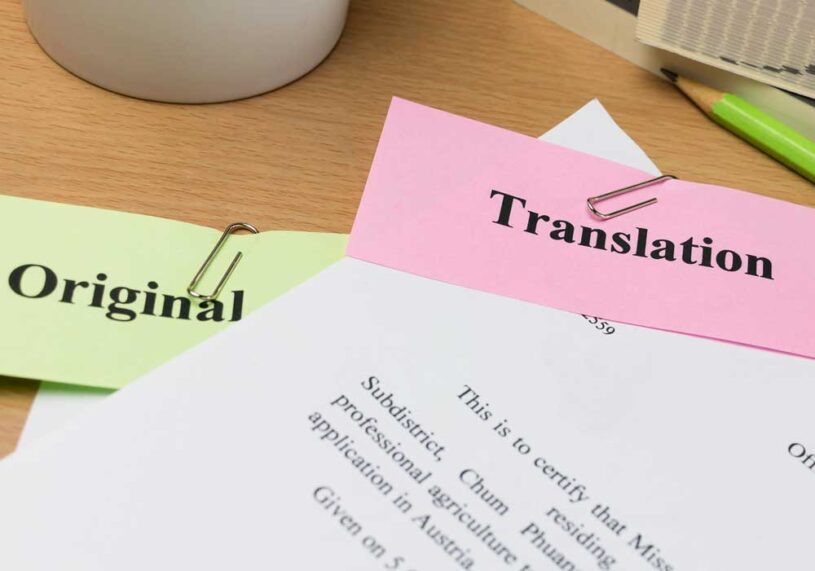When it comes to business documents, many companies do not take enough time to translate them. They simply send their staff out with a list of documents and hope for the best. But if you want your translations to be accurate, appropriate, and timely then there are some things that you should follow when outsourcing your translation work. This article illustrates a few tips for businesses that will simplify and streamline their document translation process.
Tips for Businesses to Simplify Their Document Translation Process

1. Identify the Subject Matter, Audience, and Use of Each Document
The first step in simplifying your document translation process is identifying the subject matter, audience, and use of each document. The subject matter should reflect what’s most important about your company or industry so that it can be communicated in an understandable way to your target audience.
Furthermore, you might also want to identify the audience who needs access to this information. This will help you to simplify the content so that the audience can understand it clearly. Lastly, by understanding the use of different documents, you need to begin the translation process.
If you are looking forward to streamlining your document translation process, then head on to this website to browse the best professional translation services with high accuracy and speed. Visit now to get a quote for different translation services.
2. Avoid Lengthy and Rambling Sentences
Businesses often need to simplify the document translation process, and the best way to do it is to keep the language simple. Make sure to avoid lengthy and rambling sentences as well as keep sentences short, simple and straightforward. Use active verbs instead of passive ones.
Furthermore, use a consistent style throughout your document translation process. Do not mix up English with other languages or dialects such as French or German in one sentence. If several languages are being used, then try to use them consistently throughout the translation process, so that it feels natural when they are read back by someone else.
3. Make Sure You Write in a Clear and Consistent Style

When translating a document, businesses must make sure to have a clear and consistent style throughout the document. Use a consistent style for all documents in the same company, industry, or organization, even if they are written by different employees or contractors with different preferences on font size and color scheme.
You can also use translation tools or software to write in a consistent style for all documents in the same project. This will help you to keep the language simple, and it will be easier for the readers to quickly understand the contents.
4. Check for Grammatical Errors Before Translation
Check for grammatical errors before translation, spelling errors, punctuation errors, capitalization errors, and word order mistakes that could result in awkward sentences during translation and cause confusion when read by non-native speakers of the language being translated into English.
Furthermore, use a version control system to track changes in your source document. This will allow you to keep track of all changes made to each version of the source document, who made them and when they were made, what was changed and why it was changed, and who approved those changes.
5. Hire Experienced Translators
When you are hiring a translator, they will be able to identify issues with the source document. They might suggest better ways to communicate the message, or they might even suggest changes in wording that would make it easier for everyone involved.
Furthermore, they have the skills, expertise, and knowledge to provide accurate translations. While hiring experienced translators, ensure that they are native speakers and can do their work professionally. Additionally, they can also aid in navigating the cultural and linguistic nuances of different languages.
6. Use Translation Software and Applications

Translation software and applications can help you save time and money and offer an easy way to streamline your workflow. It allows you to manage your projects, track deadlines, and even get feedback from clients at the same time as you are working on them.
Furthermore, it can improve the quality of your translations. Translators who work remotely or at different locations across multiple time zones can collaborate more efficiently than ever before. In addition, with the use of artificial intelligence, businesses will be able to get accurate translations in real time instead of waiting until after delivery has taken place.
7. Provide Clear Instructions for the Translator
Providing clear instructions for the translator to ensure they have all the information they need to do their job. Explain the context of your document and how it relates to other documents in your company or industry when using a translator.
Explain the purpose of your document. Describe the purpose of translation and other necessary details including the subject matter, audience, and use of the document. It’s crucial because it shows that you care about providing quality translations for your customers.
8. Use Translation Memory Tools
Memory tools are used to speed up the translation process by storing previously translated documents. These tools can be used for a variety of purposes, including checking for consistency in your translations and plagiarism detection.
Translation memory tools can fill any matching phrases or sentences allowing faster translations. Furthermore, they also help you check for grammar errors in your documents and make sure they are written properly by comparing them with other translations of the same text.
Conclusion

Document translation can be a time-consuming and costly process for businesses. There are many ways that businesses can simplify their document translation process. The most essential thing to remember is that the clearer you are with your instructions and expectations, the better your translated documents will be.
Furthermore, hiring professional translators and translation software can also aid to simplify the overall process. By taking these steps, businesses can save time and money, and they can also ensure that their translated documents are accurate and consistent.
